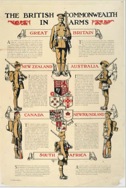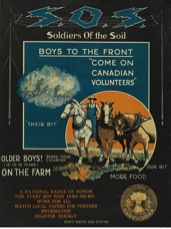Almost two months after the declaration of war, enlistment rates continued to increase in the Waterloo Region. Those who enlisted in the Second Contingent left Waterloo Region with a magnificent parade much like the parades that occurred when the region sent off men for the First Contingent.
The Waterloo Chronicle-Telegraph proudly stated that the twelve Canadian volunteers and five British reservists would embark for the front with the Canadian Second Contingent. The Breithaupt family insured these individuals for $1,000 each in the case of death while serving. This is a sample of the commitment the family displayed for Canada in the first months of the war.
(Photo courtesy of the Canadian War Museum, “Waterloo Volunteerism,“ Waterloo Chronicle-Telegraph, 24 September 1914)




